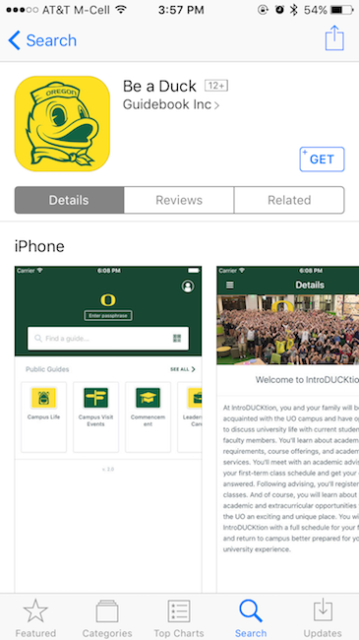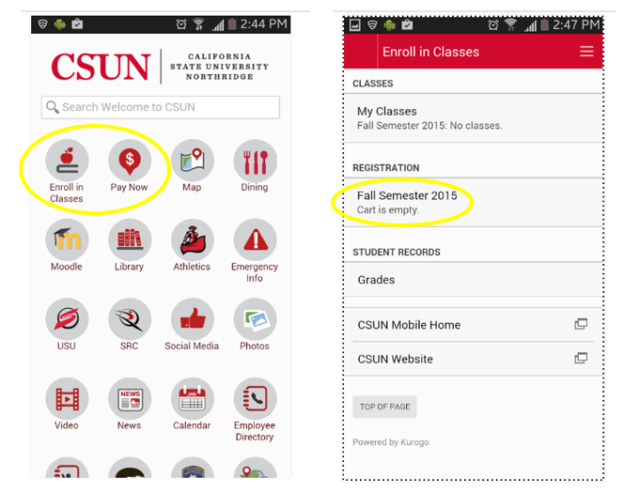You already know this: your future students are on their phones for hours a day.
Teenagers spend an average of 7 hours per day on their phones.
Are you keeping this in mind when planning your recruitment and campus comm strategies? Let’s talk about how universities are adapting to the mobile revolution.
How Universities Are Going Mobile for Admissions Recruitment
First, let’s talk about why they’re feeling the pressure to up their mobile game at all.
The Stats Don’t Lie
Hop-Online’s stats on mobile recruitment tells it all:
- 82% of students visited an institution’s mobile site before applying.It’s possible some of your prospective students had their minds made up about whether or not they’d apply before ever having seen the desktop version of your site.
- 81% of students watched college videos while researching schools.For a lot of students, the decision to visit a college campus (and therefore, take your prospective relationship to the next level) is directly preceded by watching campus videos. They’ll likely use their gut reaction to this video to decide whether or not it’s worth the visit.
- For some international prospective students, mobile is the only way to get online.In India, 75% of all web traffic is mobile; in Malaysia, a whopping 95% of traffic is mobile. So you’d better make mobile count, especially if you’re buckling down on international recruitment.
All these stats point to one cold, hard truth: the use of mobile is increasing, and if you’re not riding that tidal wave of technological progress, you’re getting left behind. So what’s a higher ed marketer to do?
How Do You Adapt Your Higher-Ed Institution to Mobile?
Your first line of defense: mobile responsiveness. At the very least, your website needs to be as responsive as possible, meaning it needs to work just as well on mobile as it does on desktop—or perhaps even better.
You’ve got 3 options:
- Hire a web designer who’s well-versed in mobile web design. Voilà. This is the easy (yet pricier) option. If you can afford to splurge to get it done professionally, do it.
- Learn some quick tips and tricks yourself. Strapped for cash? No excuse; you can’t afford not to adapt. Start with these 10 easy tips from Elegant Themes. Set aside one morning once a week to work solely on learning the art of mobile responsiveness. When you’re ready, step it up with classes on responsive design. Someone’s gotta do it, so why not you?
- Buy and use a pre-made theme that has good responsive web design built-in. This is our easiest and most affordable option, and is a great way to get started in responsive design. I’ve personally used ThemeForest themes for years and absolutely love them.
The ideal situation: having a mobile app for recruitment.
It’s the most expensive—but hands down, absolute best—option. It’s an investment.
You should follow our advice above about making sure your website is mobile-friendly no matter what, but having a mobile app, too will put you way ahead of the game. Oh, and you don’t even have to do it yourself. You could find an agency to help you out.
Case in point: 75% of high school seniors say they visit a college campus without ever contacting the admissions department. Why is this such a problem? Because then students leave with unanswered questions and no lasting contact with the university.
The solution? Make it easer and less committal (than making a phone call or scheduling a hard appointment) for a visiting prospective student to touch base with you by making communication easy through a mobile app.
What if a prospective student could download your app, tap a button that says “I’m visiting!” and quickly access an info screen on some tips for making the most of their visit? And what if those tips could include things like, “Stop by the admissions office to say hi!” or, “Be sure to check out the Hendrix Student Center, famous for its freshly-churned ice cream”?
A recruitment app like this could be a perfect way to stay in touch with prospective students and guide them through your recruitment funnel without being all in-their-face about it. It makes contacting the school easy and noncommittal and gives them a comfortable way to contact you on their terms.
How Sullivan University & University of Oregon Do It
A lot of schools are combining their communication needs into one mobile app that covers recruitment contact and current student contact. That’s the case with Sullivan University (in Kentucky)’s Connected Campus app: they use it for connecting with prospects and undergrads.
In the age of mobile, it’s way more likely for a prospective student to respond to an instant message than an email; way easier to engage with a student over in-app messaging than over the phone. These truths are at the core of Sullivan University’s recruitment strategy: they connect with prospects through the app and send them videos to watch, making it easier and more comfortable than ever before for a prospect to engage with admissions staff.
The University of Oregon has a killer recruitment-through-apps strategy that works especially well for students who can’t make regular campus tour dates or who just don’t like the structure/pressure that often comes from the traditional guided tour.

U of Oregon’s comprehensive “Be a Duck” app has a whole section dedicated to the new self-guided campus tour that has amazing capabilities like: GPS to guide the smartphone user throughout the tour and display photos/important info at each landmark, info about housing all around campus, and an option to easily submit contact info/request application materials from the admissions office.
Oh, and the coolest thing of all? You still get the guidance from a student ambassador like you would a traditional campus tour—just pop in your headphones and hit play to start the self-paced (and pressure-free!) journey around campus.
How Universities Are Going Mobile for Campus Communication
Just because we’ve got ‘em enrolled doesn’t mean we can drop the ball. Let’s talk about using mobile design & apps to communicate with undergrads.
Some Tips & Stats On Students + Phone Use
- Even from home, teens get online on their phones more than they do on laptops.Don’t think they’ll switch to desktop just because they’re at home, in their apartment, or in their dorm. This stat applies to prospects and current students, so that means everything about your mobile site needs to be pretty—not just the recruitment pages.
- Most teens are on family data plans, so you’d do well to make visiting your site data-friendly instead of data-sucking.What we don’t want is for students (or prospects) to get in trouble for using up the family data each month just because they need to access your mobile site. Use AMPs and simple graphics to make your site easy on the loading bar.
- 1 out of 3 students won’t return for their sophomore year. Sure, money and grades have a lot to do with this. But you know what I bet has just as much to do with it? The inability to adjust. The difficulty of making friends. Getting lost around campus, not having the funds or info to explore the town in a way that’ll help the student bond to her new surroundings, the lack of support from professors, administration, and fellow students. The feeling that they just don’t belong.
That last one’s a big one. So let’s talk about how a mobile app can mitigate these problems.
Ideas for Communication Through Higher-Ed Mobile Apps
My college has a stellar mobile app; it’s so comprehensive and useful, I don’t know how students today would make it through without it.
Here’s some of the capabilities of their mobile app that proved invaluable to me and thousands of others, including a few other ideas for capabilities to include in your mobile app.
Campus Transit

At Clemson, there is the Cat Bus. Cute, right? There is also Tiger Transit—a smaller vehicle, usually a van—used much like Uber, but totally free for students and a perfectly safe and convenient way to get back to the dorms after a night of drinking.
Does your school have services like these? If you do, think about including maps and schedules for regularly scheduled buses and an Uber-type interface that lets students request and check on the status of rides (if you have anything like Tiger Transit). This part of the app’s functionality was a lifesaver all throughout college and really made me feel like my school cared about my safety and success.
Mail & Keys
Replacing your lost key or picking up a package was always quite an ordeal when I was in college. What if you could request and pay for a new key all through an app, and pick it up at a set location whenever (not just during super inconvenient office hours)?
Likewise, what if your students could know immediately when they’ve had a package delivered?
Instructor Evaluations
It always seems like universities have the hardest time getting feedback on professors from their students; it’s like pulling teeth. Make it easy by making end of term surveys available through the app and watch your response rates soar.
Community, & Support
Another way Sullivan University uses their app: connecting students through forums, alerting students about events around campus, and providing quick access to advisors, who can support a student through financial/academic struggles.
And…Everything Else

California State University wins coolest and most functional app award in my book. Students can manage everything within the app: class registration and scheduling, bill pay, meal plan, athletics news and schedules, employee directory, social media, news, emergency contacts, and heck—just everything.
What This All Means For Social Media
Using mobile apps is still a fairly new thing in the higher ed world, so we don’t even know the most powerful way to fit social media into all of this yet. What we can tell you is this:
- Social media lives on mobile. 80% percent of time spent on social media is on mobile. So, as much as you can, marry your social media and mobile app comms strategies. Incentivize traffic between the 2 platforms; by, say, encouraging prospects to download your university’s app from your Twitter account.
- It’s a good idea to keep your social media profiles easily accessible on your mobile website and on your recruitment/student app.
- Keep on engaging on social media. You should be doing this already, but man, doesn’t all this talk about the importance of mobile in recruiting and comms make you want to up your social media game?
Are You Keeping Up With Higher-Ed Mobile Trends?
And here’s the even bigger news: your students are already mobile. Are you ready to keep up? Are you ready to invest in an app, or stellar mobile web design, to meet them where they are and communicate in the ways that work best for them?
Let us know how you’re mobile-fying your recruitment strategy this year in the comments below.





